
Want to know what makes terriers different? It’s right there in the name.
The word terrier comes from the Latin terra, meaning ground. This refers to the use of terriers as hunting dogs that would “go to ground” in pursuit of prey. Of course, chasing foxes and other quarry into their dens required tenacity, cleverness, independence, and diminutive size – all defining traits of terrier breeds.
While terriers don’t do much fox hunting these days, they retain that fierce temperament – or “terrier-tude,” if you will. It’s the personality of these scrappy dogs that makes them so popular as family pets.

Having said that, terriers are not for everyone. They can be hard-headed. They are often barky. And most of all, they don’t suffer fools lightly.
To mitigate these negatives, terriers need steady training, mental stimulation, and regular exercise. If you’re looking for a low maintenance dog, look elsewhere.
That’s about all we can say about terriers in general, for the truth is, terrier dog breeds come in an astounding array of forms. Whether you’re thinking about getting a terrier, or just love the dogs and want to learn more, here’s a tour of the breeds in all their glory.
Jump to Terrier Breed:
Airedale Terrier | American Hairless Terrier | American Staffordshire Terrier | Australian Terrier | Bedlington Terrier | Border Terrier | Boston Terrier | Bull Terrier | Cairn Terrier | Cesky Terrier | Dandie Dinmont Terrier | Glen of Imaal Terrier | Irish Terrier | Jack Russell Terrier | Kerry Blue Terrier | Lakeland Terrier | Manchester Terrier | Miniature Schnauzer | Norfolk Terrier | Norwich Terrier | Rat Terrier | Scottish Terrier | Sealyham Terrier | Skye Terrier | Smooth Fox Terrier | Soft Coated Wheaten Terrier | Staffordshire Bull Terrier | Welsh Terrier | West Highland White Terrier | Wire Fox Terrier | Yorkshire TerrierAiredale Terrier
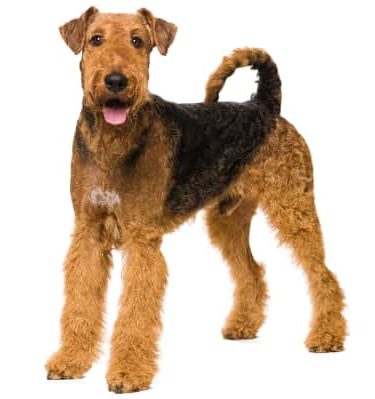
All terriers think they’re kings (or queens), but this dog has a better claim to the throne than most. Not only does the Airedale Terrier come first alphabetically, but with a height of about 23 inches at the shoulder, it stands taller than any other terrier breed. This has led the Airedale to be nicknamed “King of the Terriers.” The breed is particularly known for its courage in WWI, when Airedales were used by the British to carry messages and find wounded soldiers.
You Should Know: Airedales can be a lot to handle, given their size and independent terrier temperament. Before getting an Airedale puppy, make a plan for training and socializing the dog – it will pay off in spades.
American Hairless Terrier

The Hairless Terrier is the new (bald) kid on the block, having only emerged in 1972. It all started when a hairless pup appeared in a litter of Rat Terriers. That dog was bred to create this still-rare terrier breed with no coat. Allergy sufferers, this might be the terrier for you.
You Should Know: If you’re getting one of these dogs, don’t forget to buy a wardrobe for it as well. Hairless dogs tend to get cold, and perhaps more importantly, need protection from the sun.
American Staffordshire Terrier

What do you get when you mix the tenacity of a terrier with the strength of an old school Bulldog? Something like the American Staffordshire Terrier, also known as the AmStaff. In fact, this breed looks more like the Bulldogs of yore than modern Bulldogs do. Despite their origins in dog fighting and bear baiting, AmStaffs make loving family pets.
You Should Know: The American Staffordshire Terrier and other dogs from the “Bull and Terrier” family are banned in many places, typically by municipal law. Before getting an AmStaff, make sure it’s legal to own one in your area.
Australian Terrier

This breed strongly resembles the more well-known Cairn Terrier, and that’s no coincidence. The ancestors of this type of dog were the same working terriers that spawned Cairns, Yorkies, and other terrier breeds. They landed in Australia in the 1800s, and took their own path.
You Should Know: While not always easy to find, there are breeders of Australian Terriers in the United States, the United Kingdom, and many other countries around the world. Fans of this breed extol its sensitive nature, love of children, and devotion to its people.
Bedlington Terrier
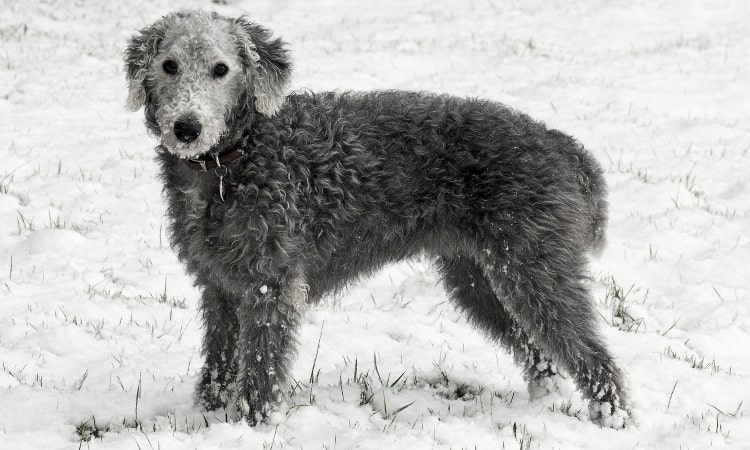
Like many terrier breeds, the Bedlington Terrier was named after a place in England. In this case, it’s the mining town of Bedlington, where the breed was employed as a ratter. With a dash of Whippet and Otterhound in its bloodline, this small dog doesn’t look like the typical terrier. But when you see it in action – you get it.
You Should Know: These dogs take on a lamb-like appearance when groomed for show. As with Poodles, the froufrou hairdo is optional if the dog is a family pet.
Border Terrier

You can’t resist that scruffy face – don’t even try! The Border Terrier was bred as a taller variety of hunting terrier, with those longer legs giving it extra speed in the chase. Modern Border Terriers retain that athleticism to this day, and excel at agility training and other sports. Mostly, however, these dogs are just great family pets, with a more tolerant and less stubborn temperament than some of the more intense terrier breeds.
You Should Know: These dogs are equally at home in both city and country. With their wiry, dirt-repelling coats and general sturdiness, they’re well-equipped for outdoor adventures.
Boston Terrier

The Boston Terrier stands out due to its tuxedo markings, which have earned it the moniker “the American Gentleman.” This breed originated with the blood sport dogs of England, but took a different path when it was imported into its namesake city in 1870. You have to wonder whether any of the old pit fighting pugilism remains in this clownish and carefree family dog.
You Should Know: The Boston Terrier is one of the most popular breeds around. However, prospective owners should be aware of health issues related to its prominent (read: buggy) eyes and flat snout.
Bull Terrier

The Bull Terrier was originally used for bull baiting, among other gruesome sports. These days, it’s prized for its personality, making it a popular choice among both families and Hollywood producers (Spuds MacKenzie, anyone?). The all-white variety of the breed looks somewhat like a walking egg, with its unusually shaped head. There’s also a Miniature Bull Terrier, which packs all of the personality in half the space.
You Should Know: Fully one-fifth of all-white Bull Terriers are born deaf. Deafness is much less common in colored Bull Terriers. However, it’s a good idea to check all Bull Terrier puppies for deafness.
Cairn Terrier

You can’t get more terrier than a Cairn Terrier. This fearsome little breed originates in the Scottish Highlands, and takes its name from the stone mounds, called cairns, where the dogs were tasked with hunting rodents. Modern Cairn Terriers maintain a strong prey drive, but their usual gig these days is being a loving member of the family.
You Should Know: These dogs have a coat that needs to be periodically hand-stripped to maintain its wiry texture. That said, if you’re not going to show the dog and don’t mind a softer coat, standard dog grooming is just fine.
Cesky Terrier
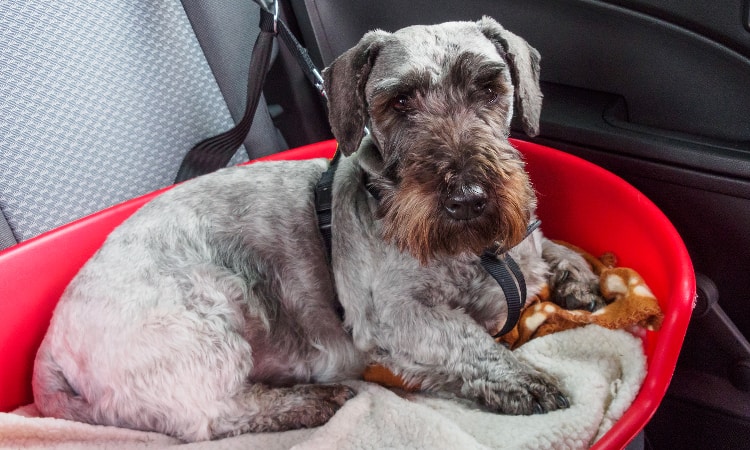
While most terrier breeds originated in England or thereabouts, this little guy hails from the Czech Republic. In fact, it’s the National Dog of the Czech Republic. The Cesky Terrier is the result of crossing the Sealyham Terrier with the Scottish Terrier. While it’s one of the more obscure terrier breeds, the Cesky Terrier nevertheless has passionate devotees around the world.
You Should Know: This breed is also known as the Czech Terrier or the Bohemian Terrier. If you’ve never heard of this breed, definitely Czech it out.
Dandie Dinmont Terrier
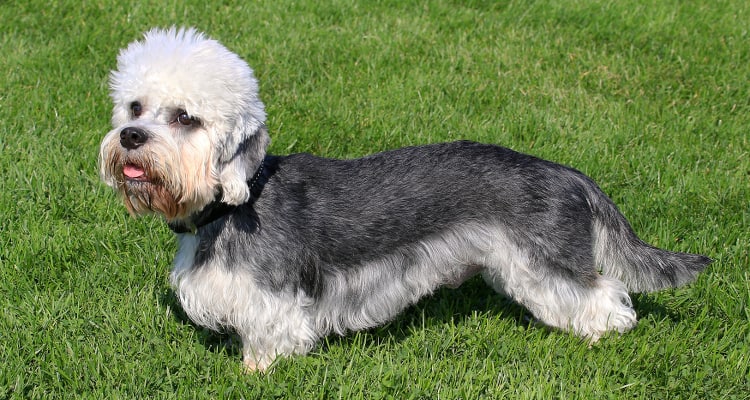
With its long body, stubby legs, large head, and fuzzy topknot, the Dandie Dinmont Terrier is one of the more oddball terrier breeds. It’s also one of the rarest. If the name rings a bell, you’ve probably seen them in a televised dog show. That, or you’re a fan of Scottish novelist Sir Walter Scott, whose character Dandie Dinmont gave the breed its name.
You Should Know: It’s not just their unusual appearance that sets these dogs apart from other terriers. They’re also said to be less hyper, and have a baritone bark rather than the usual high-pitched yap.
Glen of Imaal Terrier

This breed originates in the Glen of Imaal in County Wicklow, Ireland, and is also known as the Irish Glen of Imaal Terrier, the Wicklow Terrier, and to its fans, just Glen. These dogs are the strong-but-silent type. They were bred to hunt game quietly, rather than “sounding” as other terriers do. To this day, they don’t bark much.
You Should Know: This is a rare breed that you’ve probably only seen in pictures or on TV. It’s actually larger than you might think, weighing somewhere in the range of 30-40 pounds.
Irish Terrier
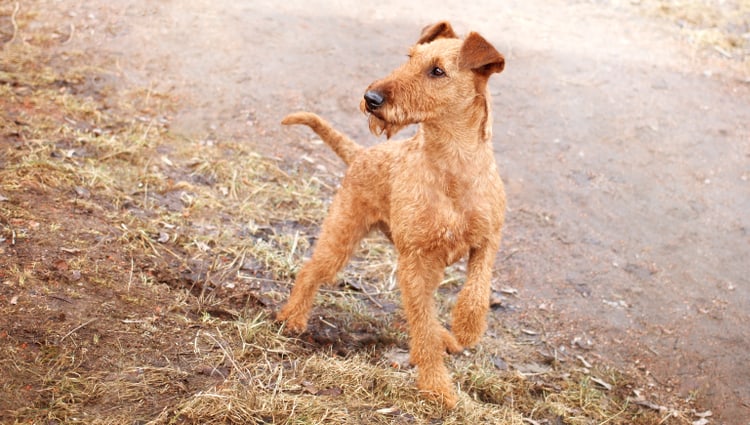
These handsome pups are among the oldest terrier breeds, having a long and distinguished history as farm dogs in Ireland. Their long legs and red color make them the sports car of terrier breeds (although it should be mentioned that they come in wheaten color as well). And you do need to take these dogs for a spin regularly – for like most terriers, they tend to get frustrated and extra-naughty if they go too long without exercise.
You Should Know: If you want to show off your Irish roots, this could be the terrier for you. The breed name, the history, the red color – it all screams “Kiss me, I’m Irish!”
Jack Russell Terrier

Here’s a dog that needs no introduction, but does require some explanation. See, in addition to the Jack Russell Terrier, there’s also the Parson Russell Terrier and the Russell Terrier, with the difference between the breeds being subtle. Of course, there’s nothing subtle about the dogs themselves – they are fearless dynamos.
You Should Know: In addition to being one of the most well-known dog breeds around, the Jack Russell is also one of the most high-maintenance. They are not recommended for solitary apartment life, but thrive on activity and engagement. They do especially well in good-sized families, where they have multiple playmates to keep them busy.
Kerry Blue Terrier

When people say terriers come in many different forms, the Kerry Blue Terrier is one of the dogs they have in mind. The blue(ish) coat is obviously the standout feature of this breed, which is named after the County of Kerry in Ireland. But these dogs aren’t just about looks. The breed is woven into Irish folklore and history, and over the years has had jobs ranging from exterminator to police dog.
You Should Know: Kerry Blue Terriers are great family dogs, but have a strong prey drive and tend to be aggressive with other dogs. The best cure for that is early socialization, including puppy kindergarten and (closely supervised) trips to the dog park.
Lakeland Terrier

Before there was an app for that, there was a terrier for that. The Lakeland Terrier was bred to serve the needs of 19th Century farmers in the Lake District in England. They were called upon to kill foxes and other vermin, with long legs for running and a smaller size for going to ground. Today, they’re killing it as family pets.
You Should Know: These dogs are known for having lots of terrier-tude, so be sure to bring your A game (“A” for assertiveness) when training them. That said, they are neither overly reserved nor overly aggressive – which for many Lakie lovers puts them in the “just right” zone in terms of temperament.
Manchester Terrier

These smooth-coated terriers were originally bred to kill rats, a job that was much-needed in the 19th Century in places such as Manchester, England. They’re known for their speed and agility, and for being lively and fun members of the family. There is both a Standard Manchester Terrier, which can weigh up to 22 pounds, and a Toy Manchester Terrier, which tops out at 12 pounds.
You Should Know: This breed nearly went extinct after World War II, and is still one of the less common terrier breeds around. As a result, you may need to make a road trip if you want to connect with a breeder.
Miniature Schnauzer

This breed doesn’t fit the terrier profile in many ways. It doesn’t have “terrier” in its name, nor a background with origins in England, Ireland, or Scotland. But what the Miniature Schnauzer does have is a feisty terrier personality, an athletic build, and a face that’s to die for. Put it all together, and it’s no wonder Minis are among the most popular dogs on the planet.
You Should Know: This is one of the more people-pleasing of the terrier breeds. While terriers are famous for having minds of their own, Miniature Schnauzers are often focused on their owners, and with their high intelligence, can be trained to do tricks with relative ease.
Norfolk Terrier

This breed is commonly confused with its pointy eared cousin, the Norwich Terrier. In fact, beyond the ears, there’s not much separating the two breeds. At around 12 pounds, they’re some of the smallest terriers around. They started as ratters and fox hunters, and now make their bones with their adorable looks and zippy personalities.
You Should Know: In the old days, Norfolk Terriers worked in packs. It’s been suggested that because of those origins, this particular terrier is more outgoing and friendly toward other dogs.
Norwich Terrier

Don’t mistake this for a purse dog. As with the closely related Norfolk Terrier (not to mention many other terrier breeds), these dogs are sturdy, fearless, and independent. There’s about 10 feet of dog packed into this 10-inch-tall cutie.
You Should Know: Norwich Terrier puppies are often hard to find, and expensive to acquire. That’s because litter sizes are small, and the pups often have to be delivered by caesarian section.
Rat Terrier

The name of this breed is rather generic, given that many terriers have their origins as ratters. You can blame Teddy Roosevelt for that, as he’s the one who apparently came up with the name (stick to bears, Teddy). These dogs were a mainstay on American farms of the early 20th Century, and they seem to be making something of a comeback in popularity in recent years. Both Standard and Miniature Rat Terriers are valued for their keen intelligence, trainability, and eagerness to help humans in a variety of ways.
You Should Know: While many dog breeds come with a long and terrifying list of potential health problems, the Rat Terrier does not. The hardiness of the breed is likely due to its diverse origins and continued interbreeding with other dogs throughout its history.
Scottish Terrier
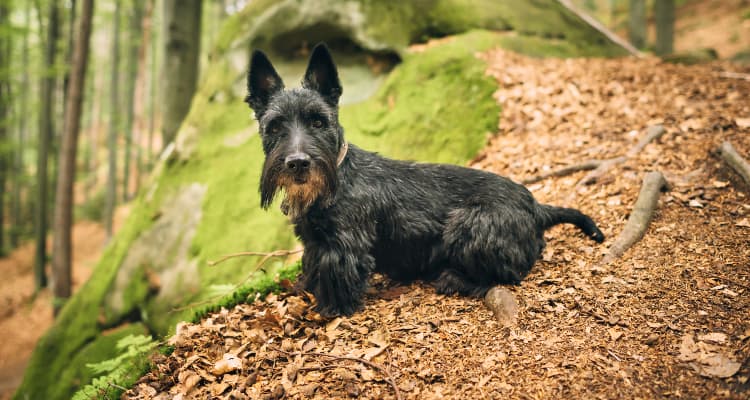
The Scottish Terrier isn’t the most popular dog breed around (at least not anymore), but it just might be the most iconic. With its short stature, bushy beard, and flowing skirt, it’s instantly recognizable even to the uninitiated. Scotties have a reputation for having a gruff personality, but it’s probably fairer to characterize them as independent. Also, the ornery side of Scotties usually only comes out around strangers and other dogs – with their families, they are sweet.
You Should Know: No one could reasonably blame you for falling in love with a Scottish Terrier based on its looks. Just make sure you’re ready to accept that headstrong temperament as part of the deal, and be prepared to take the dog to the groomer’s regularly to maintain that irresistible Scottie style.
Sealyham Terrier

As a breed, the Sealyham Terrier has had its ups and downs. From its humble origins in Wales as an otter-hunter, it rose to become the most fashionable dog in Hollywood, owned by such A-listers as Elizabeth Taylor, Alfred Hitchcock, and Cary Grant. But fame – as is often the case – was fleeting, and the breed is now one the lessor known terriers around. Does anyone smell a comeback?
You Should Know: The rarity of these dogs is hard to fathom, as they make great family pets and are adaptable to different environments. Certainly if you want a conversation starter, get a Sealy.
Skye Terrier

Make no mistake: There’s a lot of personality under all that hair. Unfortunately, not many people know these dogs, which are as good-natured as they are unique-looking. If you manage to see one of these lovely terriers in person – much less own one – count yourself lucky.
You Should Know: The long, silky hair of a Skye Terrier needs to be brushed regularly to prevent it from matting (and to stay fabulous). But otherwise, the grooming requirements of this breed aren’t as burdensome as you might expect.
Smooth Fox Terrier

Some sources state that the Smooth Fox Terrier is merely a variation of the Wire Fox Terrier, while others insist that the two breeds are not closely related at all. Regardless of their bloodlines, the breeds have a lot in common, including similar size and temperament. Which one you go for likely comes down to whether you like the scruffy look, or prefer a dog that’s easy on your petting hand.
You Should Know: While not among the most popular breeds, the Smooth Fox Terrier has a lot of desirable traits for a family dog, including a friendly nature, a low-maintenance coat, and that sparkling personality. Like many terriers, they do need a lot of exercise and stimulation, however.
Soft Coated Wheaten Terrier

The Soft Coated Wheaten Terrier is the most popular of the long-legged terriers from Ireland (the other two being the Irish Terrier and the Kerry Blue Terrier). Their silky soft coat contrasts with the coarse hair of many terrier breeds. Similarly, their temperament is a bit softer than the average terrier. They’re sometimes referred to as “sweetie wheaties” by those who love them best.
You Should Know: With its more relaxed personality, the Wheaten is a good starter terrier for those who have never owned one. That said, the breed is high-maintenance in one respect – that luxurious coat needs regular brushing to prevent matting.
Staffordshire Bull Terrier

This breed is commonly (and understandably) confused with the American Staffordshire Terrier. The most obvious difference is size, as the Staffordshire Bull Terrier (or Staffy) is more compact. Bred to be the ultimate fighting dog in 1800s England, the Staffy is built like a block of cement but is considerably more agile. Today, the breed is known as an amazing family pet, and is particularly popular in the United Kingdom and Australia.
You Should Know: Staffies are known for being sweet and especially good with children. However, because they’re so powerfully built, it’s essential to get them socialized with people and other dogs early on.
Welsh Terrier

This breed is related to the smaller Lakeland Terrier and the larger Airedale Terrier, and bears a resemblance to both. Said to be one of the oldest terrier breeds, the Welsh Terrier was originally bred to exterminate troublesome varmints in Wales. Among their prey were badgers, which gives you some idea of this dog’s grit. Like other terrier breeds, they’ve successfully transitioned to being affectionate companions.
You Should Know: This is a solid dog breed with few health concerns and a good average lifespan. The main thing new owners should be concerned with is keeping these dogs occupied, as they have a lot of energy.
West Highland White Terrier

The West Highland White Terrier (or Westie) looks very much like a bleached version of its cousin, the Cairn Terrier. The white color was likely bred into these dogs to prevent them from being mistaken for foxes when on the hunt. Now it’s more of a fashion statement, and no doubt a big reason for the breed’s popularity as a house pet.
You Should Know: Westies are playful, quirky, and just plain adorable – but be advised that they don’t always like to cuddle. They’re independent dogs, and may not tolerate the restrained feeling of being held or sitting on a lap.
Wire Fox Terrier

These dogs have historically excelled in two areas: hunting foxes and winning dog shows. Of course, they do more of the latter these days, winning their group at Westminster more than just about any other breed. They also make darn good companions, if you can keep up with these smart and athletic dogs.
You Should Know: If you’re planning to show the dog, or just want to maintain a Westminster-worthy appearance, you’ll need to have that wiry coat hand-stripped. Clipping the fur results in it getting softer and more faded – but it’s also cheaper, easier, and perfectly fine for a family pet.
Yorkshire Terrier

If you use popularity as the yardstick, this is the true king of the terriers. It seems like there’s a Yorkie on every corner and in every other lap. With their silky fur and precious Ewok-like faces, Yorkies seem to be made for pampering. And yet, if they had a choice, they’d probably rather be chasing rats.
You Should Know: Teacup Yorkies have become a trendy choice. However, the ethics of breeding ever-tinier dogs is questionable at best. Any breeder of teacup dogs warrants extra scrutiny.
As mentioned, it takes a special person to own a terrier. If you’re thinking about getting one, make sure you have the time, patience, and energy to deal with an assertive dog.
If you do decide you’re ready to have a terrier in your life, consider adopting. Because terriers can be a handful, they often end up getting surrendered by people who didn’t understand what they were getting into. There are rescue organizations for many terrier breeds that can hook you up with the type of dog you’re looking for.
Given enough love and attention – and perhaps an obedience class or two – even a particularly challenging terrier can fit right into your pack.
